Text and photos by Ray Linville
A couple of weeks before Thanksgiving, our thoughts often begin to shift to traditional pies and other desserts, much more than the bird that will anchor the center of the table. One traditional pie for my family is a Southern favorite—pecan.
Can you imagine foraging for pecans or walking a farm to find nuts that have just fallen on the ground? Through the years, generations of families did just that to create a sweet treat for a holiday meal, whether in a pie, cake, or bread. Now almost every month, we also enjoy pecans as a garnish with vegetables and in salads.
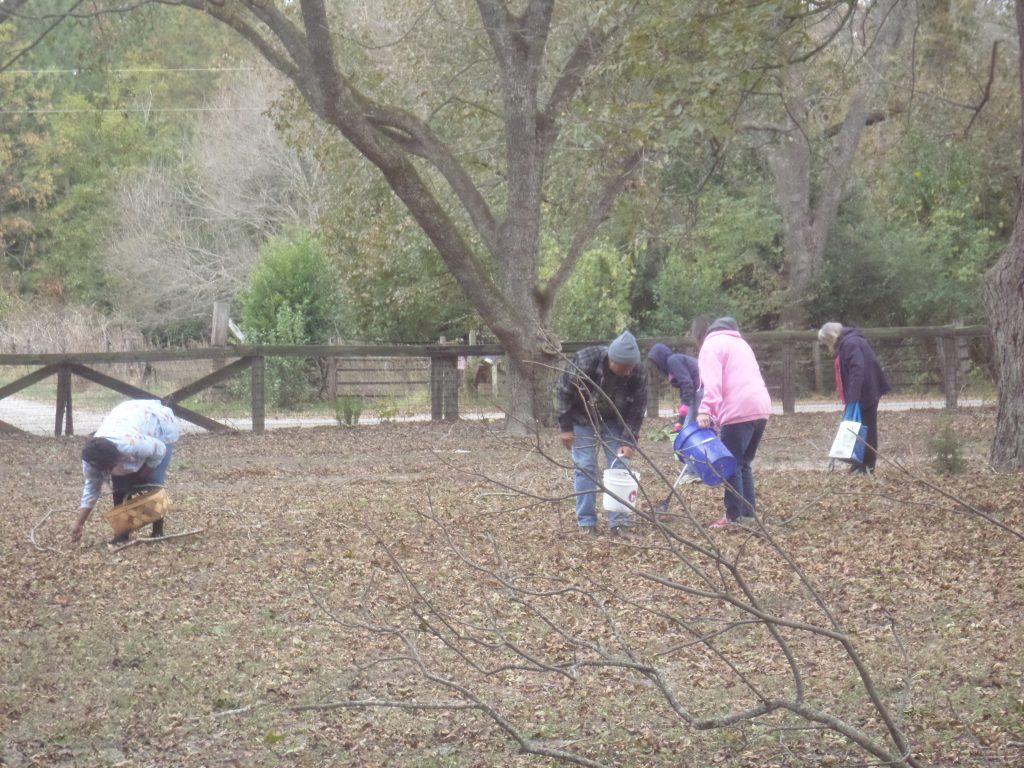
When my wife saw a newspaper ad about pecan picking in our county, I was intrigued to see the property, the trees, and the people interested in picking their own pecans. So off we went to the address (with help from our car’s GPS navigation) and found a historic farm known as Fox Track still in use today to board horses. The pecan trees were planted in a small orchard, now divided into several paddocks, or enclosures where horses are kept and exercised.
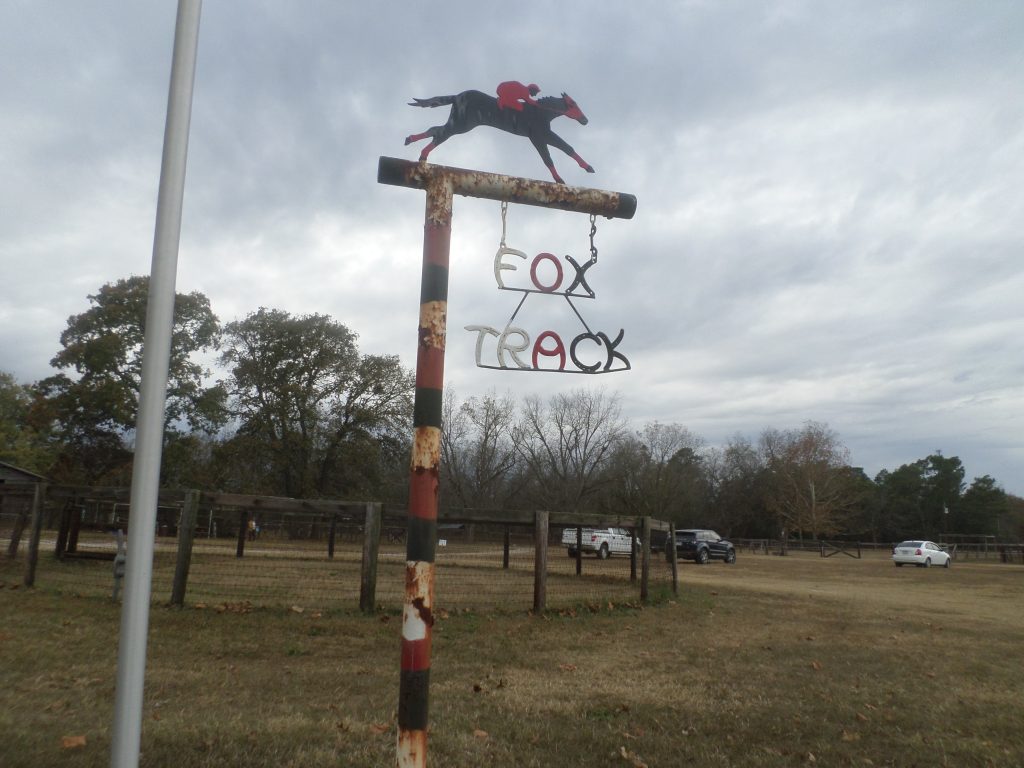
When I arrived, Eddie Ferguson, the farm manager, was explaining the procedures to several people who had also just arrived. “Pick what you want,” he said. “When you finish, you give me half. There’s no money involved.”
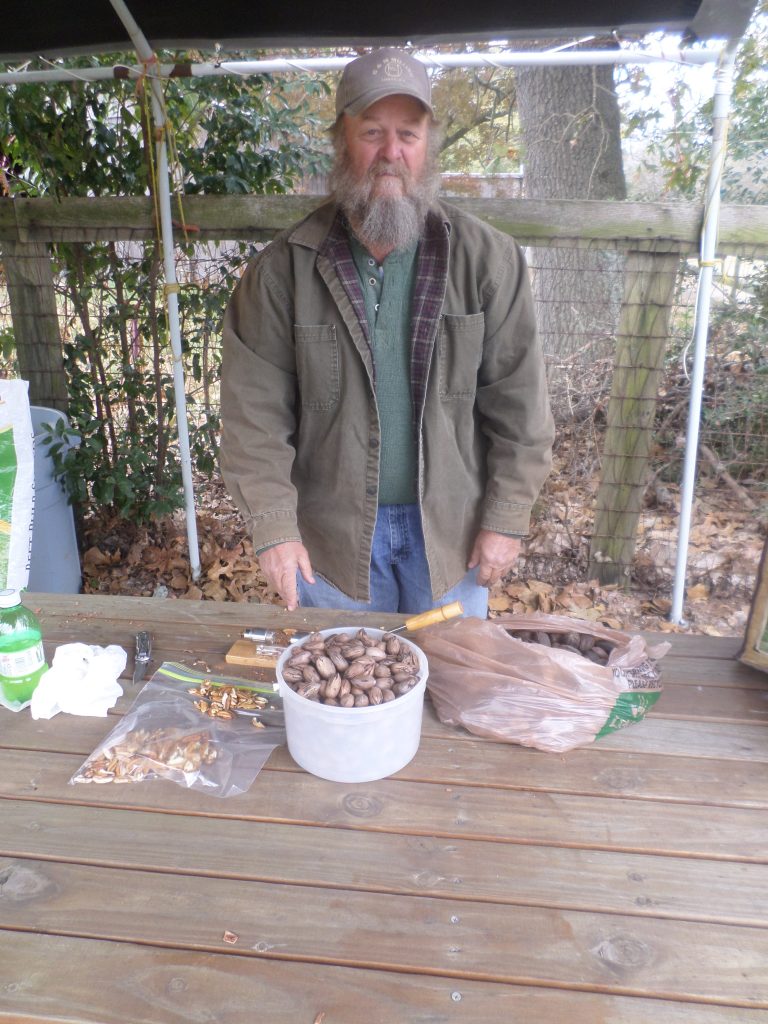
The time for picking pecans at Fox Track is very limited. It’s open only for two hours on two days in the first two weeks of November. I didn’t know how long it would take to get the quality we wanted but soon found two hours is more than enough time. Pecan picking is not too difficult, but you need to avoid the nuts with holes in them (where a creature has already eaten the good part). Some nuts feel light (leave them—not enough meat inside), and many are concealed among the recently fallen brown leaves so you have to look carefully on the ground as you walk. If you are picking on a horse farm, you also have to step carefully and avoid other brown objects.
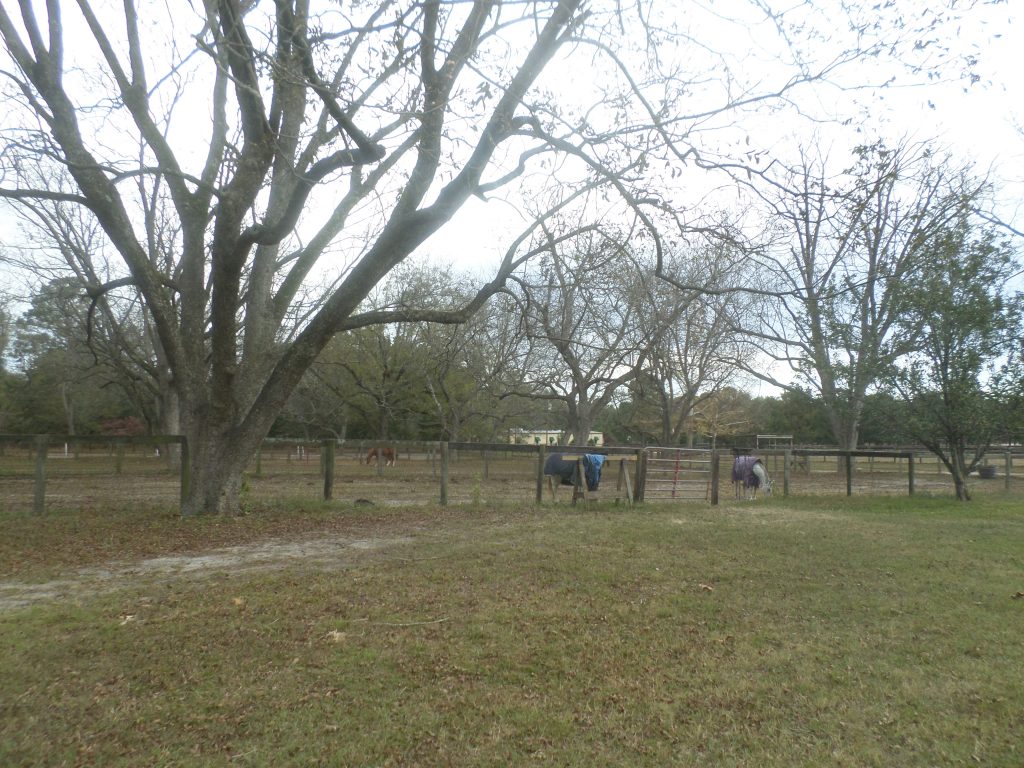
At the farm, I met Christine Burns, 80, of Aberdeen who was enjoying the day’s balmy fall temperatures with her husband Johnnie. “I just pick for myself,” she says. She has been picking pecans for about 50 years that she freezes and uses in pies, cakes, and candy. Although they had only been picking for 30 minutes, they already had gathered two large plastic bags of nuts.
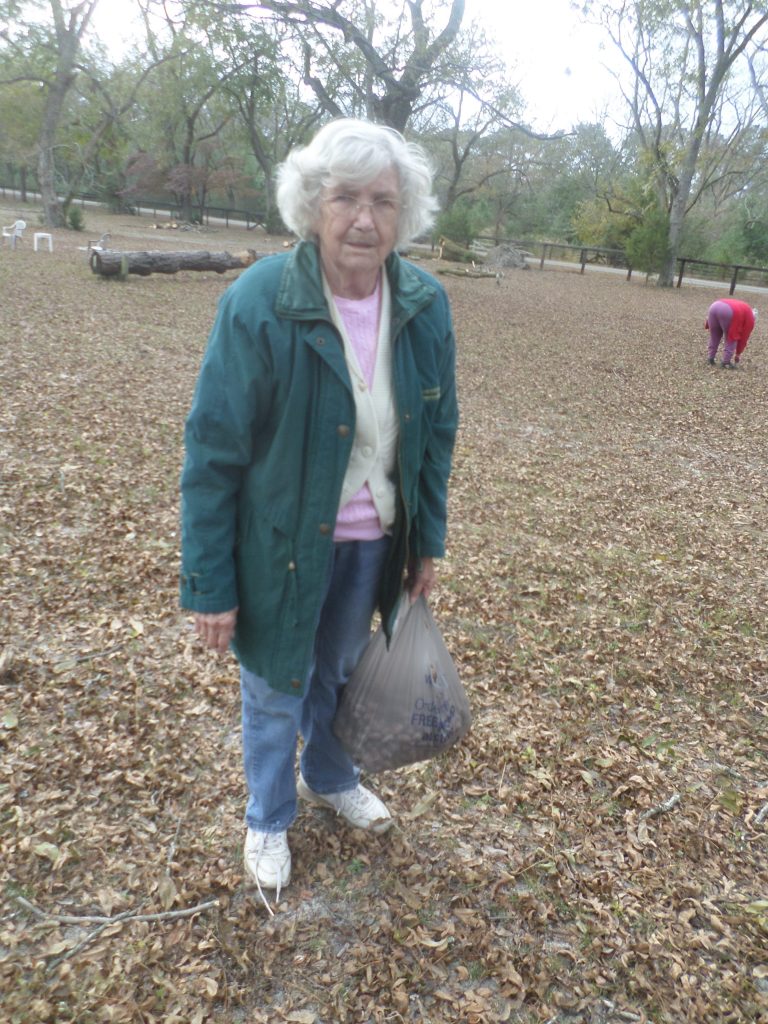
Another picker was Jinnie Simmons of Jackson Springs, another nearby community, who was picking pecans for her holiday baking. Picking pecans reminded her of the time in Moore County that her family sharecropped on Cameron Farm (now Cameron Boys Camp School) where they grew and harvested tobacco, peas, cotton, cucumbers, and other crops for the owner.
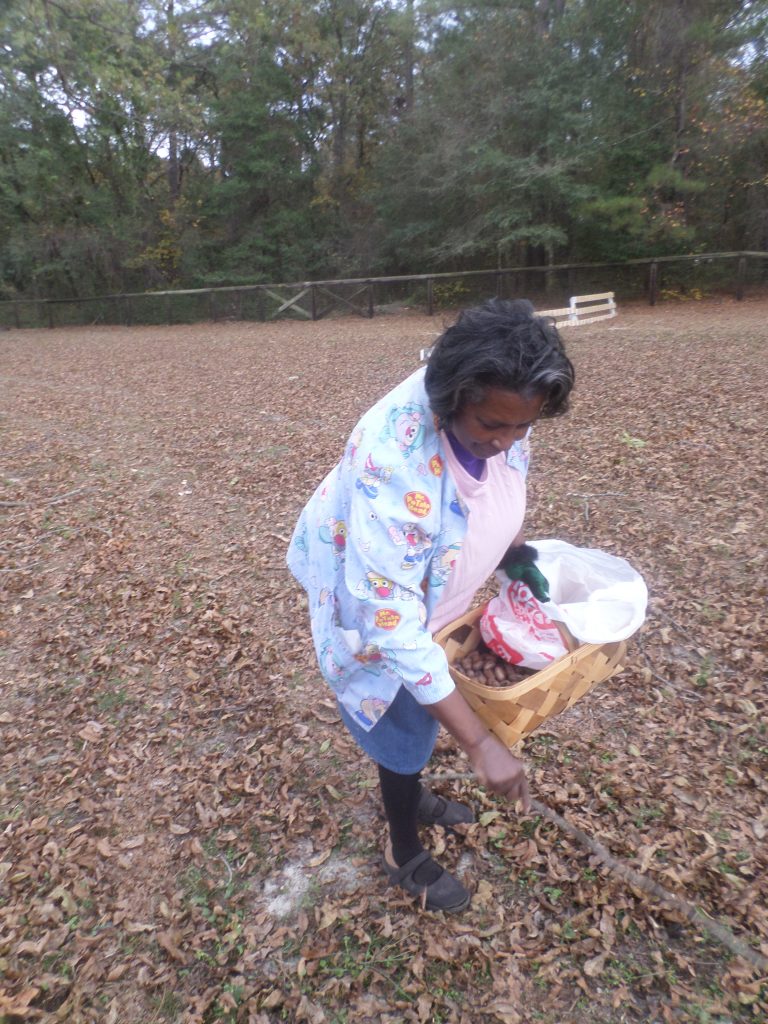
As I picked, I thought about my own ancestors who were sharecroppers in this state. Because my mother grew up in a sharecropping family, I’m only one generation removed from living on someone else’s land, tending the crops, and then having little left after the owner received his due. As I walked among the trees, I decided that a 50-50 split was acceptable (for a day adventure but wouldn’t want to live on what I could pick).
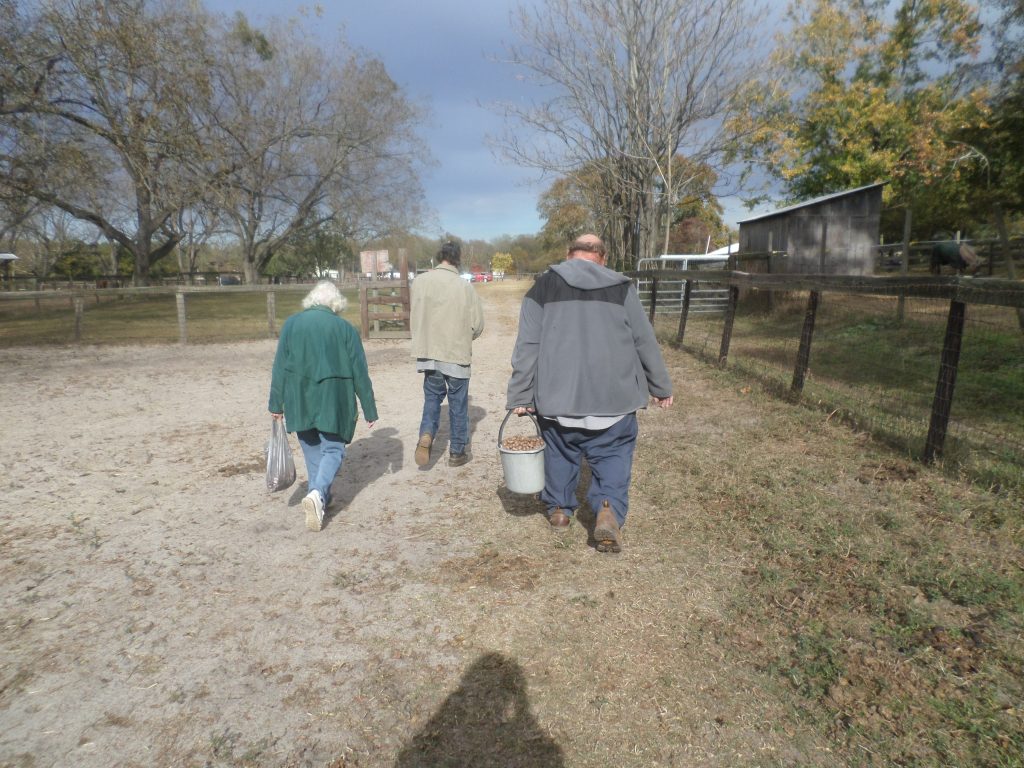
When I checked out, I had so few nuts—hardly a few pounds—that Ferguson refused to take the farm’s half. Maybe he was also pleased that I was asking questions and taking pictures (including one of him). At least for this sharecropper on this one day, I came out all right.
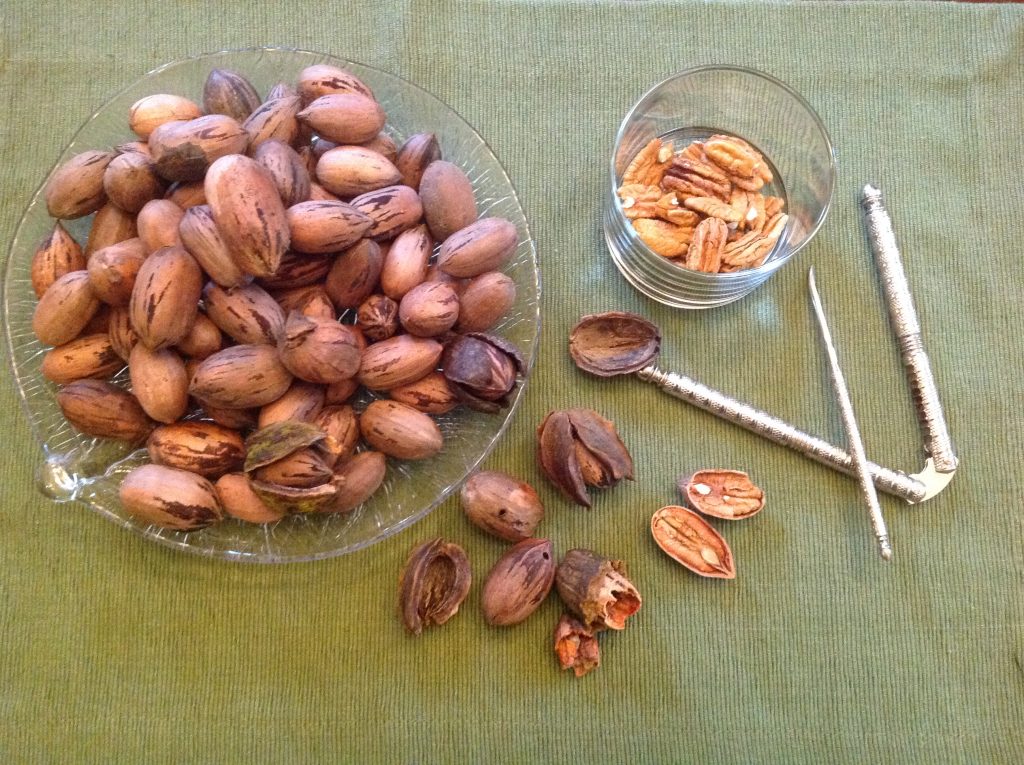
Leave a Reply